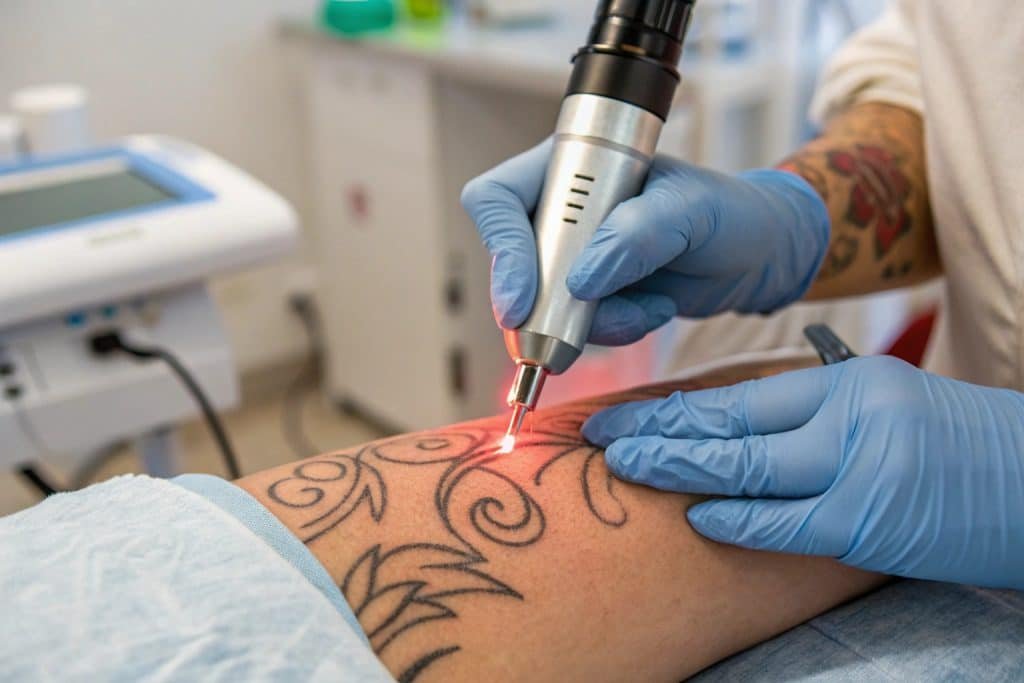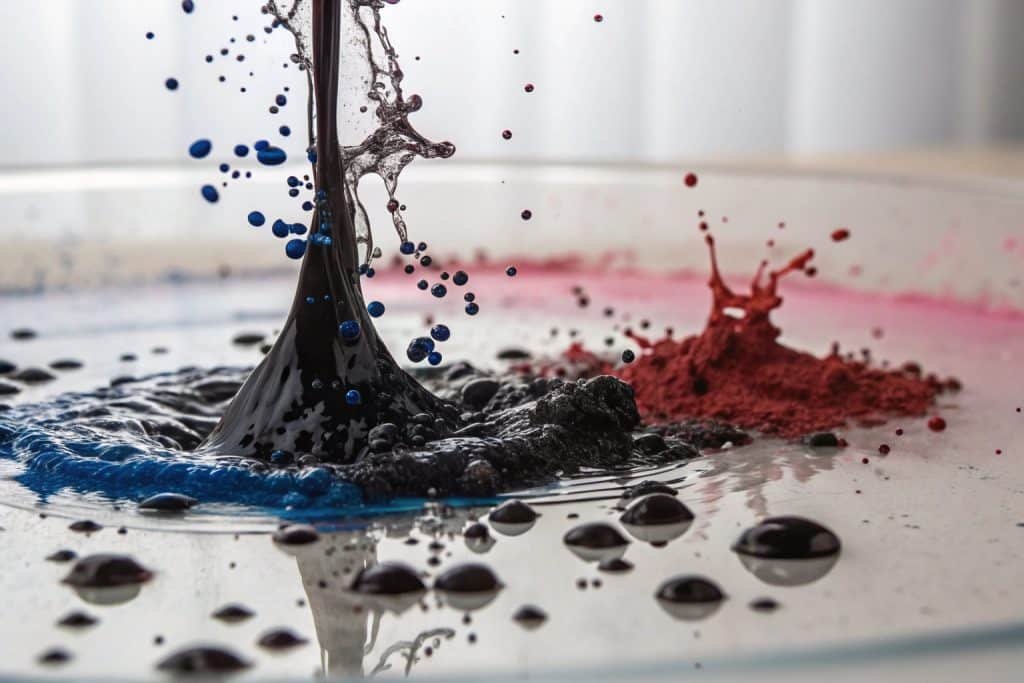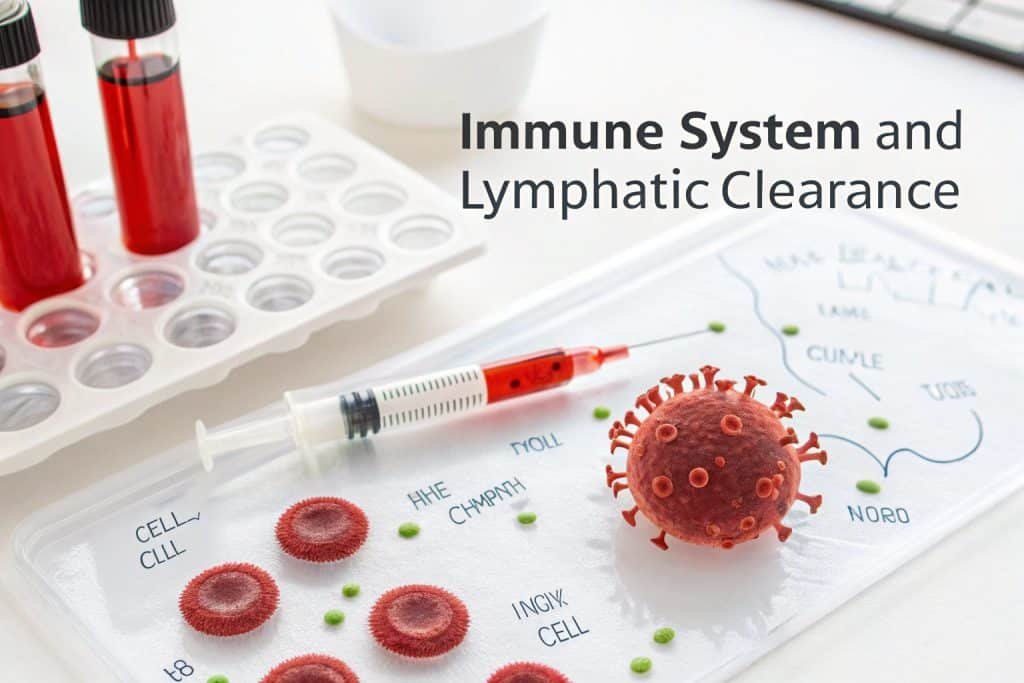People are curious about the process of laser tattoo removal.They want to understand the science behind it before committing.
Laser tattoo removal isn't magic. It's a combination of advanced laser technology and your body's natural healing processes. Here's how it works.

Let's start with how the laser interacts with the ink.
The Science of Laser Tattoo Removal: How Does It Work?
Demystifying the process.Many misconceptions exist about how lasers remove tattoos.
Laser tattoo removal is a blend of technology and biology. The laser targets the ink. Your body's immune system removes the shattered ink particles.
Process:
- Targeting the Ink.
- Breaking Down the Ink.
- The Body's Role.

the science of laser tattoo removal
It's a fascinating process. Let's break it down.
Targeting the Ink: How Lasers Interact with Tattoo Pigments
How does the laser "know" where the ink is?People might think the laser damages the surrounding skin.
Lasers use the principle of selective photothermolysis.
Selective Photothermolysis
- Selective: The laser emits specific wavelengths of light. These are absorbed by the tattoo ink pigments, not the surrounding skin.
- Photo: Refers to light.
- Thermo: Refers to heat.
- Lysis: Refers to destruction.
Different wavelengths target different ink colors:
| Wavelength (nm) | Targets | Laser Type |
|---|---|---|
| 1064 | Black, dark blue | Nd:YAG |
| 532 | Red, orange, yellow | Nd:YAG |
| 755 | Green, blue, black | Alexandrite, Pico |
| 694 | Green, blue, black, resistant blacks | Ruby |
The laser light heats the ink particles rapidly.
Breaking Down the Ink: The Shattering Process
What happens to the ink when the laser hits it? Is it burned away?
The rapid heating causes the ink particles to shatter into much smaller fragments. This is due to thermal expansion and the generation of acoustic (sound) waves.
Process:
- Rapid Heating: The ink absorbs the laser energy and heats up extremely quickly.
- Thermal Expansion: The heated ink particles expand rapidly.
- Acoustic Waves: This rapid expansion creates shockwaves.
- Fragmentation: The combination of heat and shockwaves shatters the ink into tiny particles.
It's a "controlled injury". It breaks down the ink. It minimizes damage to surrounding skin.

The Body's Role: The Immune System and Lymphatic Clearance
What happens to the shattered ink particles?Do they just stay in the skin?
Your body's immune system is the key to removing the shattered ink.
Steps:
- Recognition: Macrophages (a type of white blood cell) recognize the ink fragments as foreign substances.
- Phagocytosis: Macrophages engulf the ink particles.
- Lymphatic Drainage: The macrophages, carrying the ink, travel through the lymphatic system.
- Elimination: The ink particles are eventually eliminated from the body as waste.
A small number of tiny pigment particles may be metabolized through the epidermis.

It's a natural process. Now, let's discuss the types of lasers used.
Different Types of Lasers Used in Tattoo Removal: Q-Switched and Picosecond
Are all lasers the same?Clients may have heard different terms and be confused.
There are two main categories of lasers: Q-switched and picosecond.
Types
- Q-Switched Lasers:
- Pulse Duration: Nanoseconds (billionths of a second).
- Common Types:
- Nd:YAG (1064nm & 532nm)
- Alexandrite (755nm)
- Ruby (694nm)
- Picosecond Lasers:
- Pulse Duration: Picoseconds (trillionths of a second) – 1000 times faster than nanosecond lasers.
- Common Types:
- PicoSure (755nm)
- PicoWay(1064nm/532nm)
Shorter pulse is better. Picosecond lasers may shatter ink more effectively. They potentially require fewer treatments.
| Laser Type | Pulse Duration | Wavelengths (nm) | Advantages | Disadvantages |
|---|---|---|---|---|
| Q-Switched Nd:YAG | Nanoseconds | 1064, 532 | Effective for black and red inks, widely available. | May require more treatments than picosecond lasers. |
| Q-Switched Ruby | Nanoseconds | 694 | Effective for green, blue, and black inks, good for resistant tattoos. | Less versatile than Nd:YAG, higher risk of hypopigmentation in darker skin types. |
| Q-Switched Alex | Nanoseconds | 755 | Effective for green, blue, and black inks. | Less effective for red inks. |
| Picosecond (755nm) | Picoseconds | 755 | Faster ink clearance, fewer treatments, effective for recalcitrant tattoos. | Less effective for red inks. |
| Picosecond(1064/532) | Picoseconds | 1064, 532 | Faster ink clearance, fewer treatments, effective for a broader color range. | Still newer, less clinical long-term data |
Factors That Influence the Effectiveness of Laser Tattoo Removal
Why do some tattoos respond better than others?
Several factors affect the success of laser tattoo removal.
Factors:
- Ink Color:
Why Some Colors Are Easier to Remove?
Darker colors (black, dark blue) absorb laser energy more readily. Lighter colors (yellow, white) are more challenging. - Tattoo Age and Depth:
Impact on Laser Penetration and Ink Shattering?
Older tattoos tend to fade more easily. Deeper tattoos require more treatments. - Skin Type:
Considerations for Different Pigmentation Levels?
Darker skin types have a higher risk of pigmentary changes (hypopigmentation or hyperpigmentation). - Immune System Response:
The Body's Individual Ability to Clear Ink?
A healthy immune system is crucial for effective ink clearance. - Laser Type and Setting:
Match the Technology to the Tattoo.
Using the right laser wavelength and appropriate settings. - Aftercare Compliance:
- Following aftercare instructions carefully is essential.
| Factor | Impact on Removal |
|---|---|
| Ink Color | Black and dark blue are easiest; red, yellow, and green are more challenging; white is the most difficult. |
| Tattoo Age | Older tattoos generally fade more easily. |
| Tattoo Depth | Deeper tattoos require more treatments. |
| Skin Type (Fitzpatrick) | Darker skin types (IV-VI) have a higher risk of pigmentary changes. |
| Immune System | A healthy immune system is crucial for clearing the shattered ink particles. |
| Laser Type & Settings | The correct laser and settings must be chosen for the specific tattoo and skin type. |
| Aftercare Compliance | Proper aftercare minimizes complications and promotes healing. |
Potential Side Effects and Complications of Laser Tattoo Removal
What are the risks?Clients need to be aware of potential side effects.
Side Effects
- Temporary Side Effects (Common):
- Redness, Swelling, Blistering, Scabbing, Itching?: These are usually mild and resolve within days or weeks.
- Permanent Side Effects (Rare):
- Hypopigmentation, Hyperpigmentation, Scarring, Textural Changes?: These are less common, but possible. Risk factors include darker skin types, improper laser settings, and poor aftercare.
- Infection:
- The Importance of Proper Aftercare?: Following aftercare instructions carefully minimizes the risk of infection.
- Allergic reaction.
The Importance of a Qualified and Experienced Technician
How to ensure a safe and effective treatment.
The skill and experience of the technician are crucial.
Key Points:
- Certification: Choose a technician who is properly trained and certified in laser tattoo removal.
- Experience: Look for a technician with extensive experience in treating various tattoo types and skin types.
- FDA-Approved Lasers: Ensure the clinic uses FDA-approved lasers.
- Safety Protocols: A reputable clinic will follow strict safety protocols to minimize risks.
- Consultation: A thorough consultation should be conducted to assess your tattoo, discuss your medical history, and explain the procedure and potential risks.
Conclusion
Laser tattoo removal is a process that combines advanced technology with your body's natural healing abilities. Understanding the process, choosing a qualified provider, and diligently following aftercare instructions are key to achieving the best results. The laser works by shattering the ink particles, and your body then clears them away over time. At Delya, we are committed to providing you with the highest standard of care and cutting-edge technology to ensure a safe and effective tattoo removal experience. Trust Delya to help you on your journey to clear, ink-free skin.
